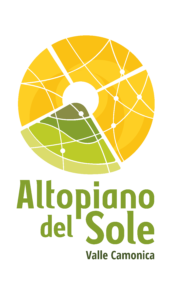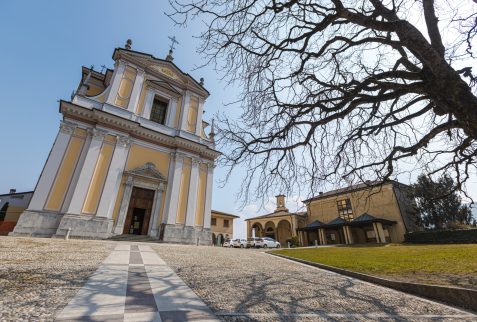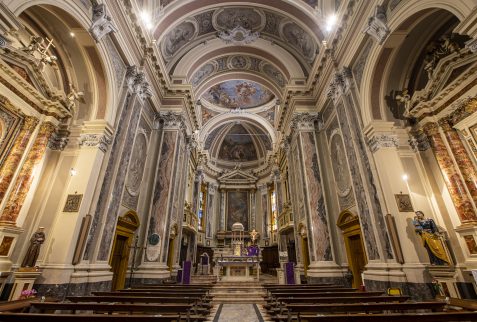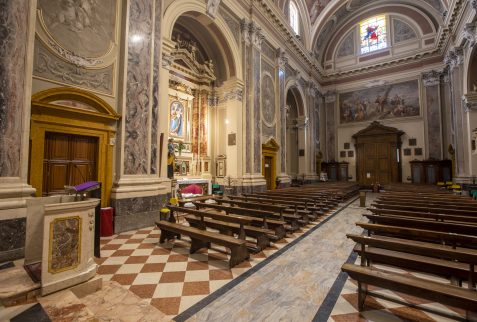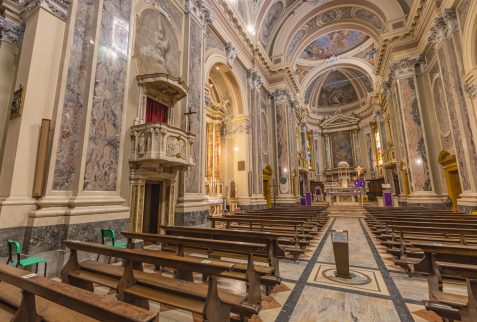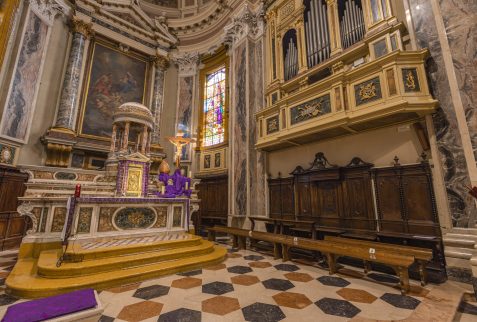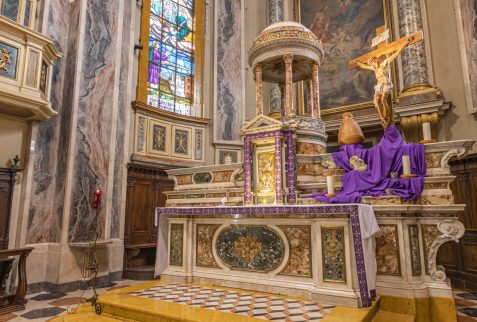St John the Baptist Parish Church
per person
The first documented record of the parish church of St John the Baptist in Borno dates back more than a thousand years, to the beginning of the 11th century, when the ancient church was dedicated to St Martin the Bishop. In the mid-fifteenth century, the church was completely renovated, but it was not until the mid-eighteenth century that it was enlarged by the hands of the master architect Girolamo Catteneo di Canè. The intervention greatly embellished it with new frescoes and today it is notable for its solemnity.
The exterior is very pleasant due to its location and the plants on the sides of the church. Note the centuries-old horse chestnut tree that with its branches protects everyone from storms and the sun. The bell tower, which has been remodelled and raised in height several times, features a concert of five bells cast by A. Crespi and placed there in 1825. The system for the operation is electric-manual, also for the “allegrezza” sound.
THE INTERIOR
he one-room interior presents a pleasant and valuable ensemble. The first altar on the right dedicated to Saint Joseph, made of wood, displays a canvas by Lattanzio Querena completed in 1829. It depicts the confessor saints Joseph, Gaetano da Thiene, Francis of Assisi and Rocco.
The second altar on the right, dedicated to Mary Queen of the Holy Rosary, also in marbled wood, features a statue of Mary Help of Christians. The antependium with relief statuettes of local craftsmanship, attributed to the Sculptor from Nona in Val di Scalve, Giovanni Giuseppe Piccini, is famous and valuable. Inside is a statue of the dead Christ by Fantoniana from 1716. In the upper part of the altar is the relic of Saint Vincent Martyr.
In the presbytery, the valuable organ built in 1875-77 by the Manzoni workshop of Bergamo stands out on the right-hand choir loft.
The high altar is the work of the sculptor Giacomo Novi executed in 1794. The valuable altarpiece by Sante Cattaneo, depicting the Madonna with Child and Saints John the Baptist and Martin, is set into the altarpiece.
The large sacristy is enriched with late 16th century furniture and valuable paintings such as a Nativity and the Immaculate Conception by Pietro Scalvini from the 18th century.
The altars on the left, similar to those on the right, are divided by the marble pulpit made in 1939, featuring bas-reliefs of the Redeemer and Saints Martin and John the Baptist. The first altar on the left holds a painting by Querena from 1829 depicting the martyred Saints Fabian, Sebastian, Lucy, Fermo and Rusticus. The last niche contains the baptistery, made of Simona stone and surmounted by a carved sign, culminating with the scene of the baptism of Jesus.
THE TRIDUUM MACHINE
The triduum “machine” for the dead is a precious and well-guarded work, similar to a large stage set composed of large decorated and painted wooden panels, together with angels and signs recalling the four Novissimi. The apparatus is set up and used during prayers for the dead on carnival days, before Lent.
In addition, the parish church of St John the Baptist houses relics, vestments, accessories and secular works that demonstrate the ancient traditions of the people of Borno connected to the Christian faith handed down from their ancestors to the present day.
